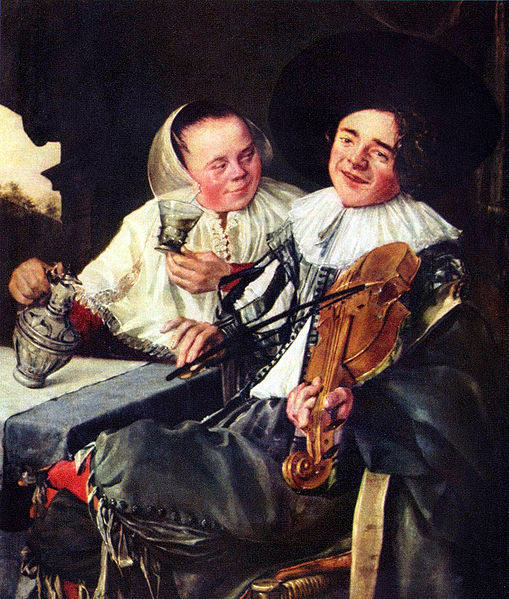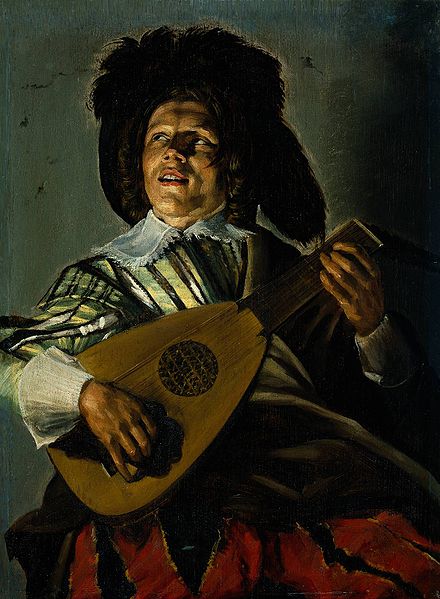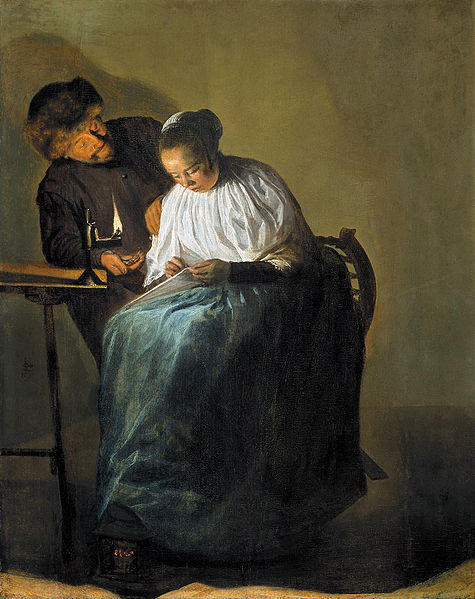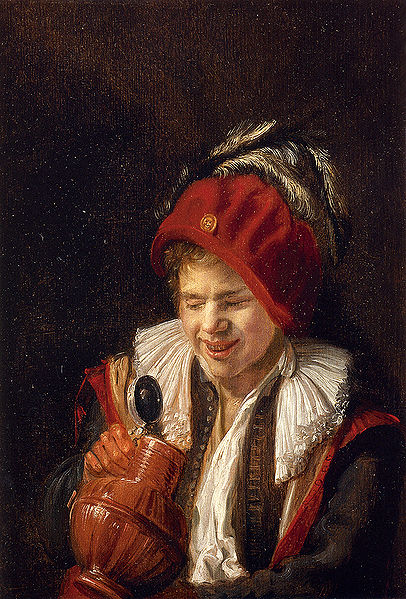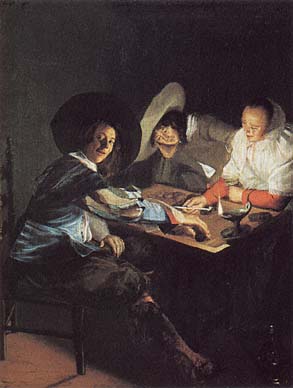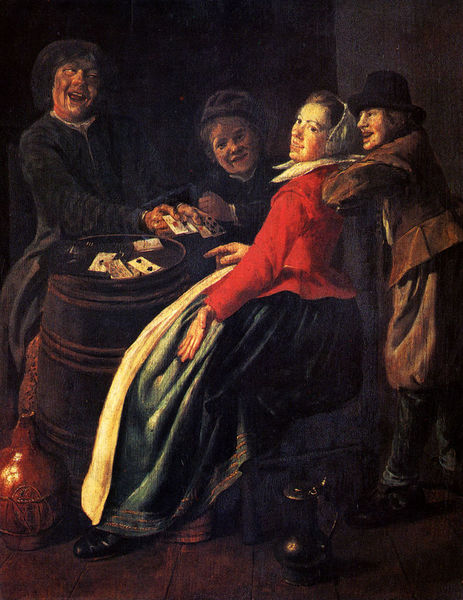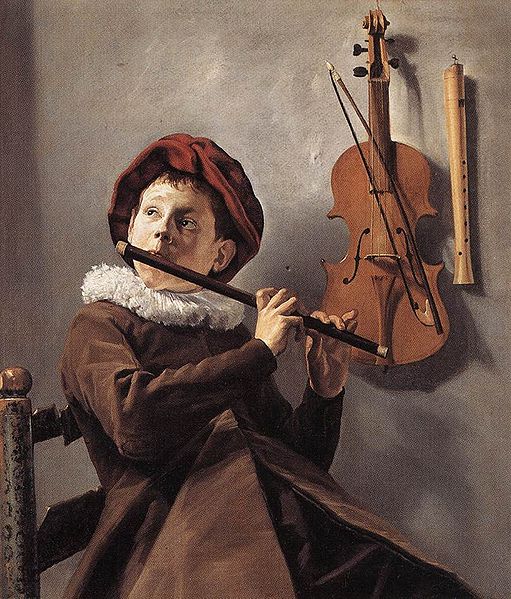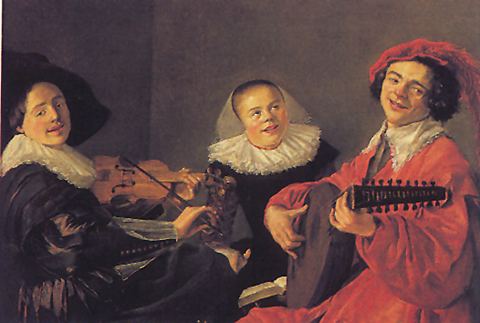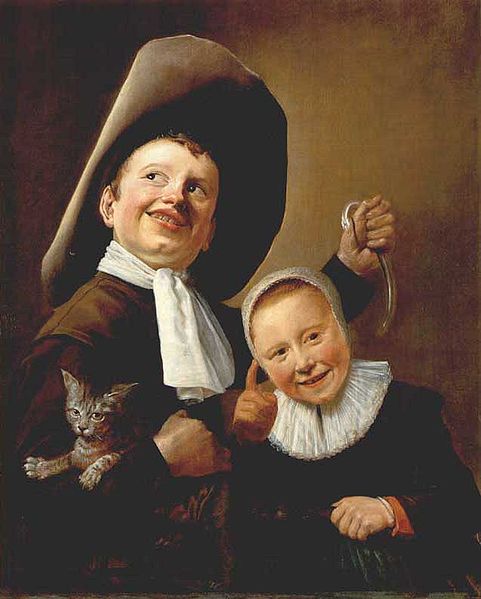<Back to Index>
- Philosopher Ernst Cassirer, 1874
- Painter Judith Jans Leyster, 1609
- Grand Duchess of Mecklenburg Schwerin Anastasia Mikhailovna of Russia, 1860
PAGE SPONSOR
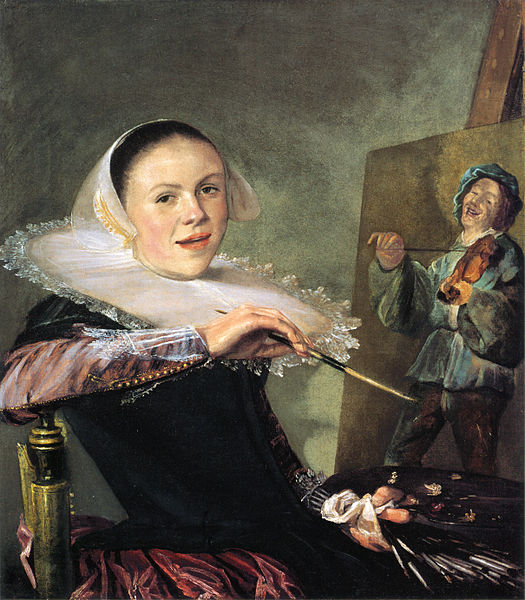
Judith Jans Leyster (also Leijster) (July 28, 1609 – February 10, 1660) was a Dutch Golden Age painter. She was one of three significant women artists in Dutch Golden Age painting; the other two, Rachel Ruysch and Maria van Oosterwijk, were specialized painters of flower still lives, while Leyster painted genre works, a few portraits, and a single still life. The number of surviving works attributed to her varies between fewer than 20 and about 35. She largely gave up painting after her marriage, which produced five children.
Leyster was born in Haarlem as the eighth child of Jan Willemsz Leyster, a local brewer and clothmaker. While the details of her training are uncertain, in her teens she was well enough known to be mentioned in a Dutch book by Samuel Ampzing titled Beschrijvinge ende lof der stadt Haerlem, originally written in 1621, revised in 1626 - 27, and published in 1628.
She learned to paint from Frans Pietersz de Grebber, who was running a respected workshop in Haarlem in the 1620's. Her first known signed work is dated 1629, four years before entering the artist's guild. By 1633, she was a member of the Haarlem Guild of St. Luke, the second woman to be registered there (the first woman registered was Sara van Baalbergen in 1631, who like Leyster, was not a member of an established artist family in Haarlem, and she also married another painter; Barent van Eysen). There were more women active at that time as painters in Haarlem, but since they worked in family workshops they did not need the professional qualifications necessary to be able to sign works or run a workshop. The most notable example of this in Leyster's case was Maria de Grebber, the sister of Pieter de Grebber, who was 7 years older than Leyster and already active as a painter in her father's workshop in 1628. She possibly studied with Leyster as a pupil of her father, and her daughter Isabelle later married the painter Gabriel Metsu. Within two years of her entry into the guild, Leyster had taken on three male apprentices. Records show that Leyster sued Frans Hals for stealing one of her students who had left her workshop for that of Hals, not three days after he arrived. The student's mother paid Leyster 4 guilders in punitive damages, only half of what Leyster asked for, and, instead of returning her apprentice, Hals settled the due by paying a 3 guilder fine. Leyster was also fined for not having registered the apprentice with the Guild.
In 1636, she married Jan Miense Molenaer, a more prolific, though less talented, artist of similar subjects. In hopes of better economic prospects, they moved to Amsterdam, where the art market was far more stable. They remained there for eleven years; they had five children, only two of which survived to adulthood. They eventually moved to Heemstede where in 1660 Leyster died at the age of 50. In Heemstede they shared a studio in a small house that no longer exists, but was located on the grounds of the present day Groenendaal park.
Most of Leyster's dated works are from 1629 – 1635, which coincides with the period before she had children. There are only two known pieces painted after 1635; two illustrations in a book about tulips from 1643 and a portrait from 1652. Only about a dozen works are generally attributed to her.
Although well known during her lifetime and esteemed by her contemporaries, Leyster and her work were largely forgotten after her death. Leyster's rediscovery came in 1893. The Louvre had purchased a Frans Hals only to find it had been in fact painted by Judith Leyster. A dealer had changed the monogram that she used as a signature. Art historians since that period have often dismissed her as an imitator or follower of Hals, although this attitude has changed somewhat in the last few years.
Apart from the lawsuit mentioned above, the nature of Leyster's professional relationship with Hals is unclear; she may have been his student or else a friendly colleague. She may have been a witness at the baptism of Hals' daughter Maria in the early 1630s, since a Judith Jans was recorded as such, but there were other Judith Janses in Haarlem. There is no documented evidence of Judith Leyster's apprenticeship under Frans Hals, even though much of Leyster's work, such as the Merry Drinker from 1629 (now in the Rijksmuseum in Amsterdam), has a very strong resemblance to The Jolly Drinker of 1627 - 28 by Hals (also in the Rijksmuseum). Some historians have asserted that Hals must have been Leyster's teacher due to the close similarity between their work.
She signed her works Judita Leystar,
often as a monogram with her initials JL with a star attached. This was
a play on words; "Lei-star" meant "Lead star" in Dutch, which was the
common name for the North star used at the time by Dutch mariners.
Leyster
was particularly innovative in her domestic genre scenes. In them, she
creates quiet scenes of women at home, which were not a popular theme
in Holland until the 1650s. Much of her other work was similar in
nature to that of many of her contemporaries, such as Hals, Jan Steen, and the Utrecht Caravaggisti Hendrick Terbrugghen and Gerrit van Honthorst;
their genre paintings, generally of taverns and other scenes of
entertainment, catered to the tastes and interests of a growing segment
of the Dutch middle class.
